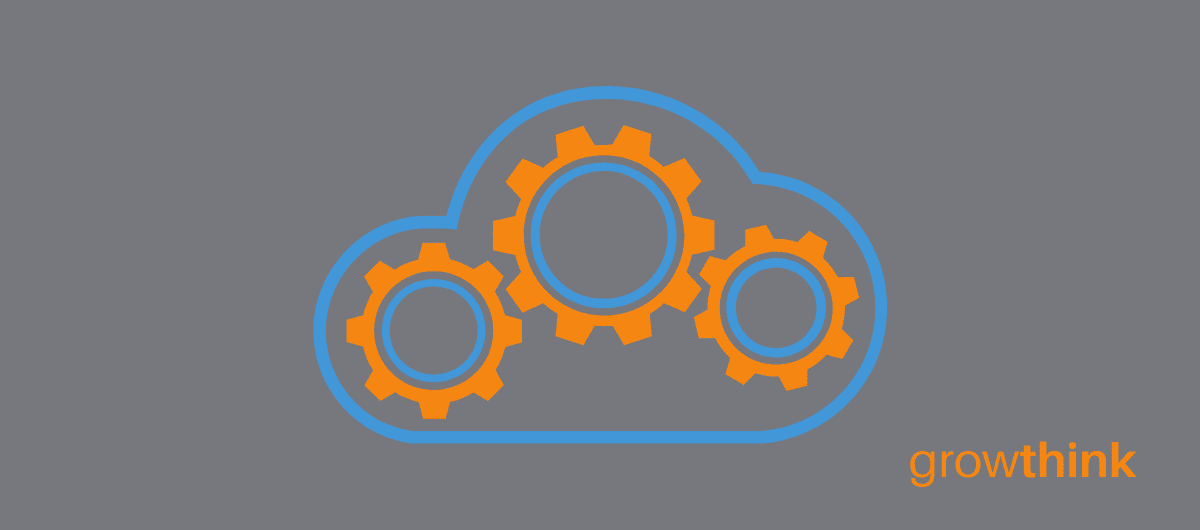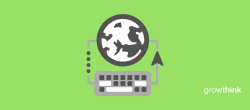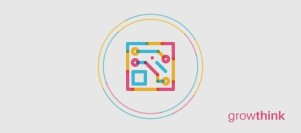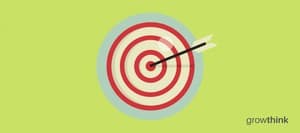SaaS Business Plan
Over the past 20 years, we’ve helped over 10,000 entrepreneurs create successful SaaS (Software as a Service) business plans. This step-by-step guide will show you how to start and grow your SaaS business. You’ll learn how to make a plan that outlines your business idea, target customers, customer acquisition strategy, revenue model, and expenses. Let’s get started on building your SaaS company today!
What is a SaaS Business Plan?
A traditional business plan provides a snapshot of your SaaS business as it stands today, and lays out your growth plan for the next five years. It explains your business goals and your customer acquisition strategy for obtaining new clients. It also includes market research to support your business concept.
Why You Need a Business Plan for a SaaS Company
Having a comprehensive business plan is a critical step for any SaaS startup or company looking to scale. It acts as a roadmap, guiding the development and growth phases by setting clear, actionable objectives. A well-structured business plan not only helps in aligning the organizational activities towards achieving business goals but also plays a pivotal role in securing funding. Investors and lenders often require a detailed business plan to understand the potential of your SaaS business before committing their resources. Additionally, a business plan enables you to anticipate challenges and plan effective solutions in advance, thereby reducing risks and increasing the likelihood of success.
Here are several key reasons and benefits for creating a comprehensive business plan for a SaaS startup or an existing company:
- Helps Secure Funding: A solid business plan is essential for attracting potential investors and securing loans.
- Guides Decision Making: It serves as a blueprint for making informed decisions and navigating your business towards its goals.
- Facilitates Growth: Helps in identifying growth opportunities and outlining strategies to capitalize on them.
- Reduces Risks: By anticipating potential challenges, a business plan allows for the development of contingencies to mitigate risks.
- Enhances Understanding of Market: Through research, it provides insights into the competitive landscape and customer needs.
- Improves Communication: Acts as an effective tool to communicate the vision and strategy of your SaaS business to team members and stakeholders.
Finish Your Business Plan Today!
If you’d like to quickly and easily complete your business plan, download Growthink’s Ultimate SaaS Business Plan Template and complete your plan and financial model in hours.
How To Write a Business Plan for a SaaS Company
Your SaaS business plan should include the following 10 key elements:
- Executive Summary
- Company Overview
- Industry Analysis
- Customer Analysis
- Competitive Analysis
- Marketing Plan
- Operations Plan
- Management Team
- Financial Plan
- Appendix
Executive Summary
Your executive summary provides an introduction to your SaaS business plan, but it is normally the last section you write because it provides a summary of each key section of your plan.
The goal of your Executive Summary is to quickly engage the reader. Explain to them the type of SaaS business you are operating and the status; for example, are you a SaaS startup, or do you have an existing business that you would like to grow?
Next, provide an overview of each of the subsequent sections of your plan. For example, give a brief overview of the SaaS industry. Discuss the type of SaaS you are offering. Detail your direct competitors. Give an overview of your target customers. Provide a snapshot of your marketing strategy. Identify the key members of your team. And offer an overview of your financial plan.
Company Analysis
In your company analysis, you will detail the type of SaaS you are offering.
For example, you might offer the following options:
- Horizontal SaaS – This SaaS business model allows big SaaS businesses to serve a varied customer base from a multitude of industries. Services can be expanded to incorporate a variety of software categories.
- Vertical SaaS – This business model includes solutions that are created for a specific customer type of industry. This software focuses solely on that industry’s needs.
In addition to explaining the type of SaaS you provide, the Company Analysis section of your business plan needs to provide background on the business.
Include answers to question such as:
- When and why did you start the business?
- What is your mission statement?
- What milestones have you achieved to date? Milestones could include usability goals you’ve reached, number of new subscriptions, etc.
- Your legal structure. Are you incorporated as an S-Corp? An LLC? A sole proprietorship? Explain your legal structure here.
Industry Analysis
The Software as a Service (SaaS) industry in the United States is a significant and rapidly growing sector. As of 2023, the market value of the SaaS industry in the U.S. is approximately $108.4 billion. This industry is expected to continue its growth trajectory, with projections indicating that it could reach a market value of $225 billion by 2025, solidifying the U.S. as the world’s largest SaaS market.
In your industry analysis, you need to provide an overview of the SaaS industry. While this may seem unnecessary, it serves multiple purposes.
First, researching the SaaS industry educates you. It helps you understand the market in which you are operating.
Secondly, market research can improve your business strategy particularly if your research identifies market trends.
The third reason for market research is to prove to readers that you are an expert in your industry. By conducting the research and presenting it in your plan, you achieve just that.
The following questions should be answered in the industry analysis section of your SaaS business plan:
- How big is the SaaS industry (in dollars)?
- Is the market declining or increasing?
- Who are the key competitors in the market?
- Who are the key suppliers in the market?
- What trends are affecting the industry?
- What is the industry’s growth forecast over the next 5 – 10 years?
- What is the relevant market size? That is, how big is the potential market for your SaaS service? You can extrapolate such a figure by assessing the size of the market in the entire country and then applying that figure to your local population.
Customer Analysis
The customer analysis section must detail the customers you serve and/or expect to serve. This includes identifying your target market and their characteristics such as age, income, location, etc.
By using customer segmentation techniques, you can further refine your target market and tailor your marketing efforts to specific groups of customers. Examples of segmentation in the SaaS industry may include the following customer segments:
- Small and medium-sized businesses
- Enterprises
- Startups/entrepreneurs
- Non-profit organizations
It’s essential to have a deep understanding of the needs, pain points, and preferences of your target audience. This knowledge will help you develop a product that meets their specific requirements and effectively market your SaaS solution.
In addition to demographics, you should also consider the psychographics of your target market, such as their behavior, values, and lifestyle. This information can give you insights into how to position your product and messaging to resonate with potential customers.
Conducting customer surveys and market research can be helpful in gathering this data. You should also analyze your competition’s customer base to identify any gaps or opportunities within the market.
Finish Your SaaS Business Plan in 1 Day!
Don’t you wish there was a faster, easier way to finish your SaaS business plan?
With Growthink’s Ultimate SaaS Business Plan Template you can finish your plan in just 8 hours or less!
Click here to finish your SaaS business plan today.
Competitive Analysis
Your competitive analysis should identify the indirect and direct competitors your business faces and then focus on the latter.
Direct competitors are other SaaS services that offer similar features and target the same market segments as your product. Understanding these competitors involves analyzing their product offerings, market position, strengths, and weaknesses. This analysis will help you identify opportunities for differentiation, allowing your SaaS solution to stand out in a crowded market.
Indirect competitors are other options customers may use that aren’t direct competitors. This includes customized software solutions and open-source software. You need to mention such competition to show you understand that not everyone who needs software will subscribe with a SaaS company.
For each such competitor, provide an overview of their businesses and document their strengths and weaknesses. Unless you once worked at your competitors’ businesses, it will be impossible to know everything about them. But you should be able to find out key things about them such as:
- How many customers do they serve?
- What types of software do they offer?
- What is their pricing strategy (premium, low, etc.)?
- What are they good at?
- What are their weaknesses?
With regards to the last two questions, think about your answers from the customers’ perspective. And don’t be afraid to ask your competitors’ customers what they like most and least about them.
The final part of this section is to document your competitive advantages. For example:
- Will you provide superior products?
- Will you provide services that your competitors don’t offer?
- Will you make it easier or faster for customers to use your products?
- Will you provide better customer service?
- Will you offer better pricing?
Think about ways you will outperform your competition and document them in this section of your plan.
Marketing Plan
Traditionally, a detailed marketing plan includes the four P’s: Product, Price, Place, and Promotion.
This section should include the following:
Product: in the product section, you should reiterate the type of SaaS business that you documented in your Company Analysis. Then, detail the specific solutions you will be offering. For example, in addition to Customer Relationship Management solutions, will you also offer Email Marketing solutions?
Price: Document the prices you will offer and how they compare to your competitors. Essentially in the product and price sub-sections of your marketing plan, you are presenting the services you offer and their prices.
Place: Place refers to the location of your SaaS company. Document your location and mention how the location will impact your success. For example, is your SaaS production or support office located in the US or in India, etc. Discuss how your location might impact customer attraction or retention.
Promotions: the final part of your SaaS marketing plan is the promotions section. Here you will document how you will drive potential customers to your location(s). The following are some promotional methods you might consider in your marketing mix:
- Search Engine Optimization (SEO)
- Advertising in trade magazines
- Reaching out to associations that correspond with the industry or industries you are targeting
- Publishing articles or writing guest posts on relevant blogs
- Social media marketing
- Radio and/or TV advertising
Understanding and Managing Customer Acquisition Cost (CAC)
In the SaaS industry, the Customer Acquisition Cost (CAC) directly impacts profitability and long-term success of your business. Customer acquisition costs are the total cost of the sales and marketing plan that is needed to acquire customers. To keep this cost low, companies should focus on:
- Efficient marketing strategies like inbound marketing, which attracts customers through content creation, social media, and SEO.
- Leveraging customer referrals by incentivizing existing users can significantly reduce acquisition costs, as satisfied customers are likely to spread the word.
- Implementing a robust customer relationship management system to nurture leads and personalize the customer journey can also increase conversion rates, thereby lowering the overall CAC.
By focusing on these strategies, SaaS businesses can optimize their spending and improve their return on investment in customer acquisition efforts.
Finish Your Business Plan Today!
If you’d like to quickly and easily complete your business plan, download Growthink’s Ultimate SaaS Business Plan Template and complete your plan and financial model in hours.
Operations Plan
While the earlier sections of your business plan explained your goals, your operations plan describes how you will meet them. Your operations plan should have two distinct sections as follows.
Everyday short-term processes include all of the tasks involved in running your SaaS business, such as attracting customers, running the customer helpdesk, processing paperwork, etc.
Long-term goals are the milestones you hope to achieve using key metrics. These could include the dates when you expect your 100th subscription, or when you hope to reach $X in sales revenue. It could also be when you expect to hire your Xth programmer, or when you expect to launch a new solution.
Management Team
To demonstrate your SaaS business’ ability to succeed, a strong management team is essential. Highlight your key players’ backgrounds, emphasizing those skills and experiences that prove their ability to grow a company.
- Upper Management – In this section, introduce your CEO and other top-level executives. Detail their experience in the industry, leadership skills, and any relevant achievements.
- Development Team – Describe the members of your development team and highlight their technical expertise and any previous successes related to SaaS or software development.
- Sales Team – Introduce your sales team members, emphasizing their experience with SaaS products and their track record of generating sales.
- Support Team – Detail the members of your customer support team, highlighting their knowledge of your SaaS solution and their ability to provide excellent customer service.
By showcasing a strong and well-rounded management team, you not only demonstrate the potential for success but also instill confidence in potential investors or partners.
If your team is lacking, consider assembling an advisory board. An advisory board would include 2 to 8 individuals who would act like mentors to your business. They would help answer questions and provide strategic guidance. If needed, look for advisory board members with experience in software development or deployment, and/or successfully running small businesses.
Financial Plan
Your financial plan should include your 5-year financial statement broken out both monthly or quarterly for the first year and then annually. Your financial statements include your income statement, balance sheet and cash flow statements.
Income Statement
An income statement is more commonly called a Profit and Loss statement or P&L. It shows your revenues and then subtracts your costs to show whether you turned a profit or not.
In developing your income statement, you need to devise assumptions. For example, will you have 10 enterprise subscribers or 500 individual subscribers? And will subscriptions grow by 2% or 10% per year? As you can imagine, your choice of assumptions will greatly impact the financial forecasts for your business. As much as possible, conduct research to try to root your assumptions in reality.
Balance Sheets
Balance sheets show your assets and liabilities. While balance sheets can include much information, try to simplify them to the key items you need to know about. For instance, if you spend $200,000 on building out your SaaS solution, this will not give you immediate profits. Rather it is an asset that will hopefully help you generate profits for years to come. Likewise, if a bank writes you a check for $200,000, you don’t need to pay it back immediately. Rather, that is a liability you will pay back over time.
Cash Flow Statement
Your cash flow statement will help determine how much money you need to start or grow your business, and make sure you never run out of money. What most entrepreneurs and business owners don’t realize is that you can turn a profit but run out of money and go bankrupt. For example, let’s say a company approached you with a $100,000 customization contract that would cost you $75,000 to fulfill. Well, in most cases, you would have to pay that $75,000 now for employee salaries, hosting, utilities, etc. But let’s say the company didn’t pay you for 180 days. During that 180 day period, you could run out of money.
In developing your Income Statement and Balance Sheets be sure to include several of the key costs needed in starting or growing an SaaS business:
- Location build-out including design fees, construction, etc.
- Cost of equipment like computers, design and project management software, etc.
- Payroll or salaries paid to staff
- Business insurance
- Taxes and permits
- Legal expenses
Appendix
Attach your full financial projections in the appendix of your plan along with any supporting documents that make your plan more compelling. For example, you might include your office design blueprint or location lease.
Free Business Plan Template for a SaaS Business
You can download our free business plan template PDF. Our sample SaaS business plan is another free resource to help you get started on your own SaaS startup business plan.
SaaS Business Plan Summary
Putting together your own business plan will improve your company’s chances of success. The business planning process will help you better understand your target audience, your competition, and your business strategy. You will also develop the marketing strategies needed to better attract and serve your target market, an operations plan to focus your efforts, and financial projections that give you business goals to strive for and keep your company focused.
Growthink’s Ultimate SaaS Business Plan Template allows you to quickly and easily complete your Saas Business Plan.
Sources of Funding for SaaS Businesses
With regards to funding, the main sources of funding for a SaaS business are personal savings, credit cards, bank loans and angel investors. With regards to bank loans, banks will want to review your business plan and gain confidence that you will be able to repay your loan and interest. To acquire this confidence, the loan officer will not only want to confirm that your financials are reasonable. But they will want to see a professional plan. Such a plan will give them the confidence that you can successfully and professionally operate a business.
The second most common form of funding for a SaaS business is angel investors. Angel investors are wealthy individuals who will write you a check. They will either take equity in return for their funding, or, like a bank, they will give you a loan.
Additional Resources For SaaS Business Owners
- SaaS Marketing Strategies
- SaaS Pricing Strategies To Consider
- SaaS Accounting: Finances For A Subscription Model Company
Finish Your SaaS Business Plan in 1 Day!
Don’t you wish there was a faster, easier way to finish your SaaS business plan?
With Growthink’s Ultimate SaaS Business Plan Template you can finish your plan in just 8 hours or less!
Click here to finish your SaaS business plan today.
OR, Let Us Develop Your Plan For You
Since 1999, Growthink has developed business plans for thousands of companies who have gone on to achieve tremendous success.
Click here to see how Growthink’s professional business plan consulting services can create your business plan for you.


 Business Plan Template For Small Businesses & Entrepreneurs
Business Plan Template For Small Businesses & Entrepreneurs Business Plan Software Options
Business Plan Software Options Technology Business Plan Template
Technology Business Plan Template 200+ Business Plan Examples To Use To Create Your Plan
200+ Business Plan Examples To Use To Create Your Plan How To Write A Venture Capital Business Plan
How To Write A Venture Capital Business Plan How To Create A Great Marketing Plan
How To Create A Great Marketing Plan